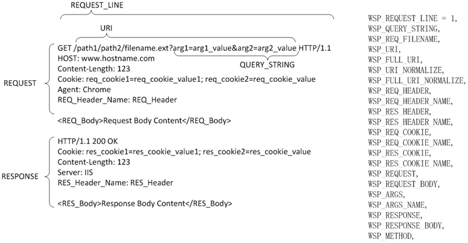Application Security
What is a WAF?
A Web Application Firewall (WAF) is a security solution designed to protect web applications by filtering, monitoring, and blocking malicious traffic based on predefined rules. Positioned between a client and a web application, a WAF primarily aims to prevent attacks on web servers by inspecting HTTP/HTTPS traffic and defending against threats like SQL injection, cross-site scripting (XSS), and cross-site request forgery (CSRF). Unlike traditional firewalls, which focus on network-level security, a WAF operates at the application layer (Layer 7) to analyze the behavior and content of web requests.
Deployed separately from the web application, a WAF offloads the resource-intensive process of security scanning from the web server, allowing centralized policy management across multiple servers. A WAF complements other perimeter security solutions, such as the FortiGate, the next-generation firewall. For example, the FortiADC WAF module applies security policies to different HTTP scanpoints, which represent various parsed elements of an HTTP transaction. Administrators can enable rules in the WAF policy settings to detect attacks at several points, including the request line, query string, filename, URI, request headers, request body, response code, and response body.

Components of FortiADC WAF
- Web Attack Signature policy — The signature database includes signatures that can detect known attacks and exploits that can be found in 29 scanpoints. In your policy configuration, you choose classes of scanpoints to process: HTTP Headers, HTTP Request Body, and HTTP Response Body.
- URL Protection policy — This policy enables you to create rules that detect patterns in the URI or the file extension.
- HTTP Protocol Constraint policy — This policy enables you to create rules that restrict URI, header, and body length; HTTP method, or HTTP response code.
- SQL/XSS Injection Detection policy — This policy includes rules to detect SQL/XSS injection in the HTTP Request URI, HTTP Referer Header, HTTP Cookie Header, or HTTP Request Body.
- Cookie Security policy — This policy enables you to create rules that prevent cookie-based attacks and apply them in a protection profile.
- Data Leak Prevention policy — This policy enables you to create rules that prevent information leaks, damages and loss.
- HTTP Header Security policy — This policy enables you to create rules to prevent or mitigate known XSS, clickjacking, and MIME sniffing security vulnerabilities. These response headers define security policies to client browsers so that the browsers avoid exposure to known vulnerabilities when handling requests.
- Input Validation Policy — This policy enables you to create rules to prevent suspicious HTTP requests by verifying the user input from scan points like URL parameter, HTML form, hidden fields, and upload file.
- Brute Force Attack Detection policy — This policy enables you to create rules to prevent too many login tests.
- Credential Stuffing Defense policy — This policy enables you to create rules to identify login attempts using username and password that have been compromised using an always up-to-date feed of stolen credentials.
- JSON Detection policy — This policy enables you to create rules that enforce security checks that examine client HTTP requests for anomalies in JSON data in HTTP POST operations.
- XML Detection policy — This policy enables you to create rules that examine client requests for anomalies in XML code.
- OpenAPI Detection policy — This policy enables you to create rules through defining a standard, language-agnostic interface to RESTful APIs, which allows both humans and computers to discover and understand the capabilities of the service without access to source code, documentation, or through network traffic inspection.
- API Gateway policy — This policy includes an API management tool that sits between a client and a collection of backend services. It acts as a reverse proxy to accept all API calls and return the appropriate result.
- Bot Detection — This policy includes rules to detect Bots. A Bot is an application that runs automated tasks over the Internet. The WAF supports two methods for detecting bad Bots: signature detection and behavior detection. You can also use allowlists to exclude known trusted sources (good Bots) from detection.
- Threshold Based Detection — This policy enables you to create rules to detect bad bots, such as web crawlers, content scraping, and attack bots.
- Biometrics Based Detection — This policy enables you to create rules that detect bots using behavioral biometrics such as mouse movement, keyboard, screen touch, and scroll.
- Advanced Protection policy — This policy enables you to create rules that detect web crawlers and content scraping.
- CSRF Protection policy — This policy enables you to create rules that protect backend servers from CSRF attacks.